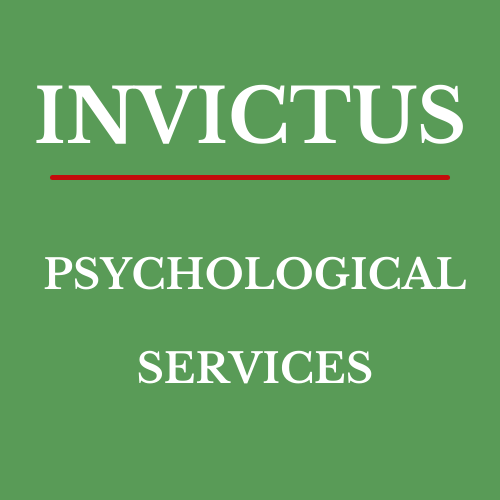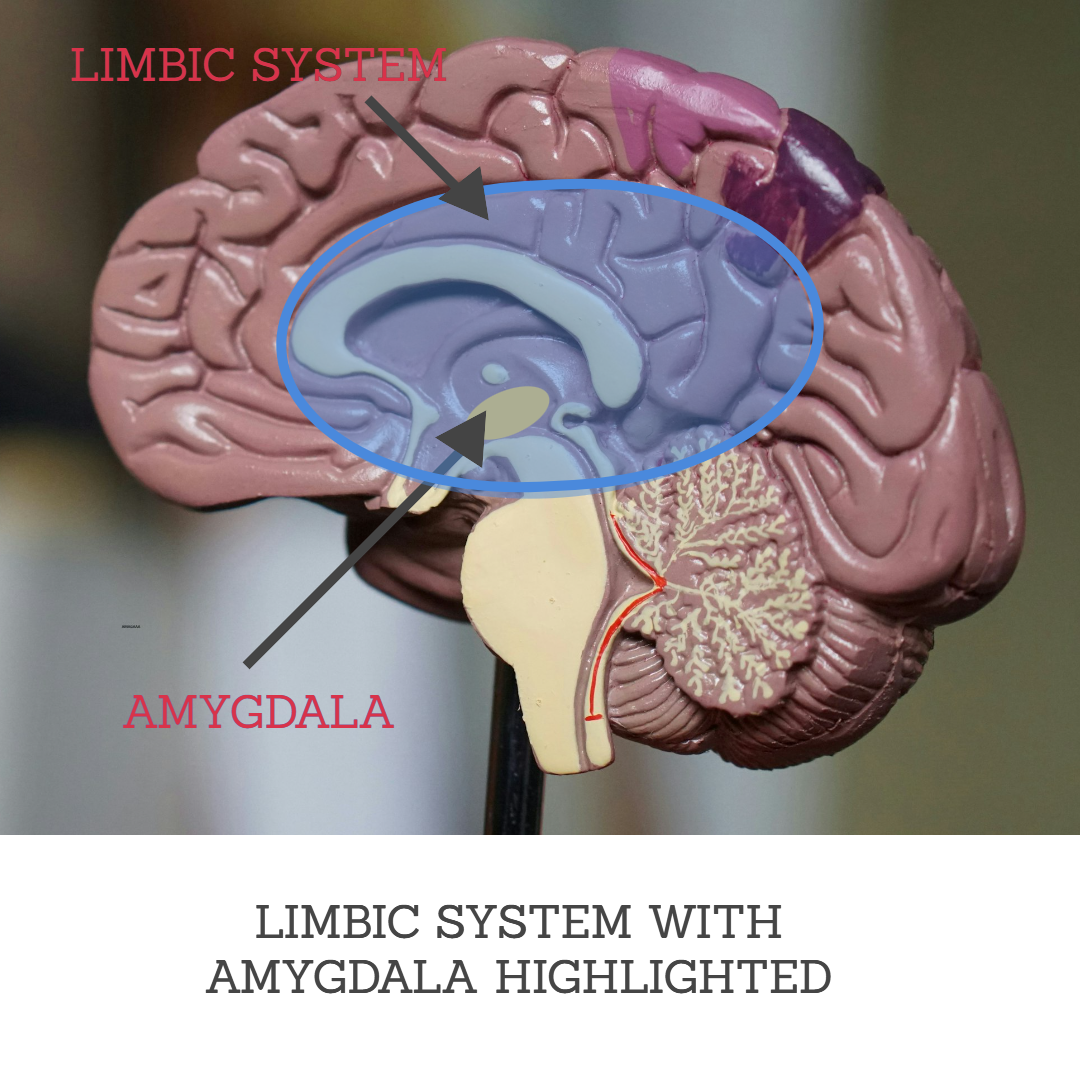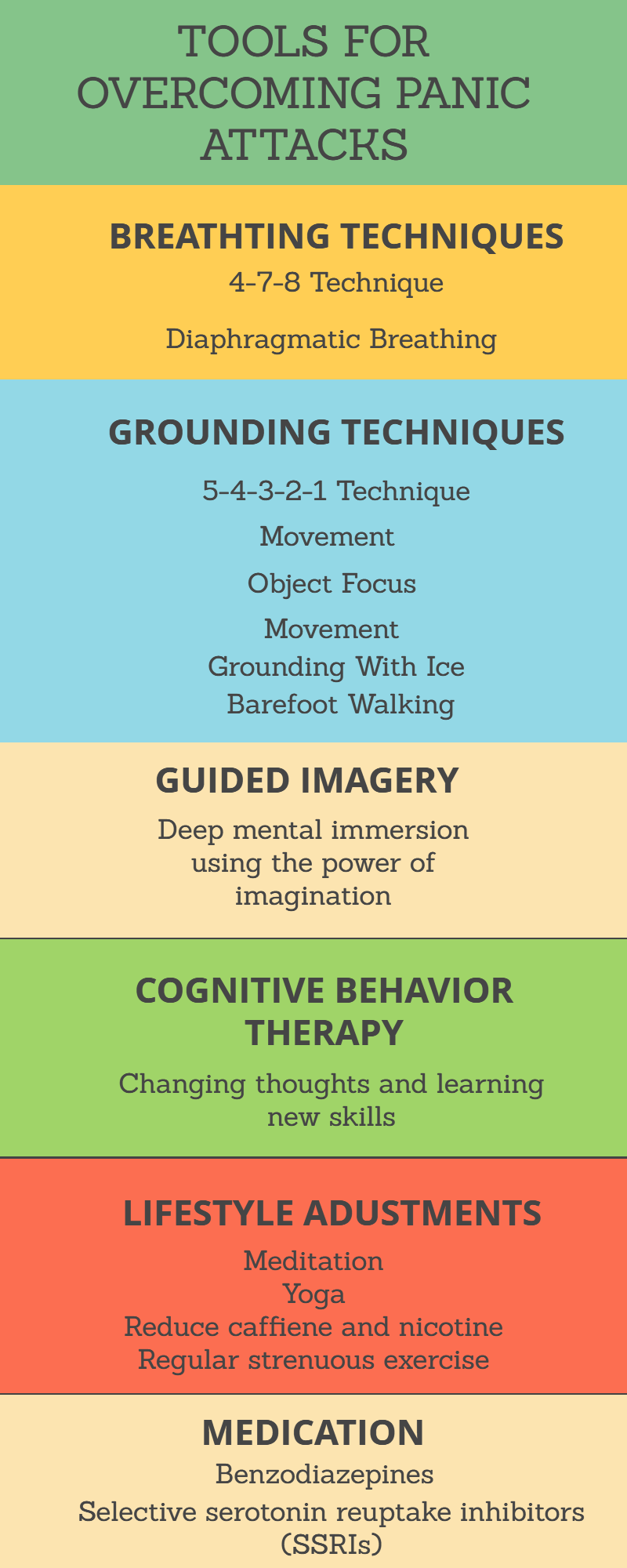Panic Attacks
The onset of a panic attack feels like your nervous system has been hijacked. Out of the blue, fear begins to rise, and with it, a sense of dread and doom. Your body responds to this by activating the fight-or-flight system. Now, your heart begins to race, and sweating, trembling, and shortness of breath quickly follow. Feeling lightheaded, nauseous, and weak are not uncommon.
The feeling of threat is so real, so palpable, it makes you want to run or find a place to hide. And that’s what many people end up doing.
They worry that they will panic while at work, shopping, or out with friends, so staying at home seems like the best alternative.
This solution, however, may eventually lead to a loss of employment, friendships, pursuing hobbies, and just living life fully.
The intensity and unpredictability of panic attacks cause many to believe that there is nothing that they can do to turn the situation around. They feel helpless.
If you are one of these folks, here is some good news: panic attacks can be overcome. Sometimes, this victory just involves reducing their frequency and intensity to the point that you can once again do everything you had been doing prior to their onset.
In other cases, panic attacks can be eliminated altogether.
Let’s briefly examine how this is done, but before doing so, we need to pause briefly in order to better understand how panic attacks arise in the first place.
Your Brain’s Security System
Describing in detail the neurological mechanisms of panic attacks is beyond the scope of this brief article. But a general overview we can do, and really should do, because it puts panic attacks in perspective. Understanding the physiological basis of why you feel such intense fear will help you gain some emotional distance and increase your confidence in pursuing a solution.
Let’s begin by looking at the limbic system, which is found toward the center of the brain and is sometimes called the ‘seat of emotions.’ Within the limbic system is the amygdala, an almond-shaped structure on each side of the brain.
The amygdala has several functions, but the function we are interested in is how it acts to keep you safe. In the simplest terms, the amygdala is your personal security system. It receives information, much of which is outside our conscious awareness, and scans it for signs of danger.
This information comes to the amygdala from visual, auditory, olfactory, visceral, and tactile channels. If danger is identified, the amygdala then sends out signals that put an individual in a state of heightened alert.
In other words, it causes you to be ready to face danger.
This security system’s ability to quickly evaluate information is both a strength and a weakness.
The strength is that it allows someone to respond almost instantaneously to signs of danger. The weakness is that such extraordinarily fast information processing does not allow much in-depth evaluation. That means the system is prone to sending off a number of ‘false alarms.’
In sum, you can think of the amygdala as a very fast, very well-meaning, but somewhat dumb security system.
An example will help illustrate. Imagine you are on a walk late at night in a new neighborhood. The street is poorly light, and deserted. Suddenly, you hear a hiss and rustling in the bushes beside the sidewalk.
Your amygdala sends signals that there is a threat nearby. You respond with a startle, and adrenaline is dumped into your bloodstream. Your heart rate increases, blood flows away from your skin, your breathing changes, your eyes dilate, and you immediately feel fearful.
But when you turn your attention to the source of the noise, it becomes clear that it was only someone’s automatic sprinkler system turning on.
Your amygdala is not capable of processing information at that level of detail. It cannot make the connections you can make by using your frontal cortex (the logical part of your brain).
Now think of what would happen if you were to take this fast, well-meaning and somewhat dumb security system and it were turned up several levels. If there were a ‘intensity knob’ on this part of your brain and it had somehow been turned all the way up.
In this case, your amygdala would frequently signal that a threat was nearby. Having turned the knob up all the way would mean it should not ignore anything that was in the least threatening.
You would frequently receive bulletins from your amygdala, putting you on full alert. Keep in mind that each time one of these bulletins is issued, your body goes on full alert, triggering the physical and emotional responses of a panic attack.
That would make life very difficult.
I’ll use an analogy to make things even more clear. Imagine having a faulty security system at home that often goes off at all hours of the day and night. You would constantly be scrambling to find out where the break-in had occurred. The police would arrive.
Everything else would be put on hold while the source of the alarm is investigated.
But because this is a false alarm, you would find nothing was amiss. When you investigate the problem it turns out that your home security system had been set at the maximum level.
It was set so high in fact that just a strong gust of wind against a windowpane would set it off.
What to do? Fix it, of course. You cannot live life with all these false alarms going off day and night.
An overly sensitive amygdala, one that is ‘turned up too high’, can also create the same sort of havoc with daily life… including provoking panic attacks.
Hopefully, you now grasp the basic idea of what is happening at a neurological level with panic attacks.
With that framework in mind, let’s look at some ways to ‘turn down’ the security system in your brain so you can gain relief from panic attacks.
Taming Panic Attacks: Turning Down The Security System
It’s important to remember that symptoms arising from a panic attack are normal physical responses that arise from perceived danger (not real danger, just perceived danger). These are not signs of impending death, even though it may feel otherwise.
Accepting this fact will help you avoid much of the negative self-talk and some of the fear that comes with panic attacks.
Each of the interventions below has been shown to help many panic attack sufferers. You can use one or several to get started.
1. Breathing Techniques
One of the most immediate ways to alleviate the symptoms of a panic attack is through controlled breathing. During a panic attack, individuals often experience hyperventilation, which can lead to a cascade of physical symptoms that worsen the sense of panic.
Individuals can counteract the rapid breathing that goes with a panic attack by focusing on slow, deep breaths. The 4-7-8 breathing technique is particularly effective: breathe in for 4 seconds, hold the breath for 7 seconds, and exhale slowly for eight seconds.
This method helps to calm the nervous system and bring the body back to a state of equilibrium. Be cautious, however, if you become anxious when experiencing lightheadedness. Holding your breath for seven seconds may create that sensation and make you feel even more fearful.
If this happens, you need to change the technique slightly. Hold your breath for only two to three seconds rather than seven.
Diaphragmatic breathing is a variant of the 4-7-8 method and is exceptionally well supported by research. You can find a description of diaphragmatic breathing in an article I wrote on resolving OCD. https://forresttalley.com/blog-anxiety-depression-trauma-ptsd-positivepsychology/curb-stomping-obsessive-compulsive-disorder-ocd
2. Grounding Techniques
Grounding techniques are practical strategies for detaching from emotional distress. They can help you focus on the present moment and diminish the sensation of overwhelming fear.
Here are some common grounding techniques to try out.
5-4-3-2-1 Technique: Engage your senses to list things around you: 5 things you see, four you can touch, three you hear, two you smell, and one you taste. This helps center your mind away from distress.
Object Focus: Pick an object nearby and note its details, like texture, color, and shape. This focus can ground you in the reality of your surroundings.
Movement: Gentle movements like stretching or walking can help release built-up energy and stress.
Placing your hands under a stream of water can also provide calming sensory experience.
Barefoot Walking: Establishing a physical connection with the earth by walking barefoot can be grounding.
3. Guided Imagery
Guided imagery (or ‘visualization’) serves as a mental retreat, enabling individuals to create a peaceful inner world, providing solace amidst anxiety’s turmoil.
I’ve found that my patients get the most from this approach when they imagine a scene they have already experienced, a place they are already familiar with, and to which they have already attached positive associations.
These scenes are often of a white sand beach, a mountain stream or lake shore, or the night sky above a tranquil desert.
Once such a scene is identified, the person begins this exercise by sitting comfortably and taking a long, slow, deep breath while imagining that cool, calming air is filling their lungs and traveling throughout their body, from their head to fingertips to toes.
When exhaling, they imagine stress being breathed out and dissipating into the air.
These breaths are repeated three to four times.
At that point, they are ready to close their eyes and imagine themselves immersed in whatever scene they selected. They begin by visualizing the shapes and colors of the surroundings. After that, they include the sounds that are part of that place (e.g., if a beach scene, they may imagine the sound of waves and seagulls calling as they fly overhead).
Then come the tactile feelings (again, with a beach scene, this is the warmth of the sun, the feel of the sand under their feet, and so forth).
Lastly, the smells attached to that place (e.g., pine in the mountains or salty air at the beach).
For those who are breaking free from panic attacks, guided imagery can be a potent tool: a psychological refuge where anxiety’s megaphone is turned into a whisper, and a sense of peace pervades. As with nearly all skills, consistent practice is the key to success.
4. Cognitive Behavioral Therapy (CBT)
Cognitive Behavioral Therapy is a highly effective psychological treatment for panic attacks and panic disorder. CBT works by helping individuals identify and challenge the negative thought patterns that contribute to panic attacks.
Through CBT, individuals learn to recognize the early signs of a panic attack and employ coping strategies to prevent the attack from escalating.
Finding a therapist that uses CBT is not difficult because it is such a common therapy. The important part of this approach is locating a therapist that you feel is the best fit for you.
5. Lifestyle Adjustments
In addition to the above methods, lifestyle adjustments can help reduce panic attacks. Strenuous physical activity can be helpful, and dialing in your sleep is at the top of the list.
Keeping a log of your daily anxiety level (a rating on a scale of one to ten) and noting any particular triggers of anxiety is also helpful. After a couple of weeks of collecting this data, you will likely see specific patterns emerge that will allow you to make changes in your life that reduce your anxiety.
A word of caution, however, is in order. Some people with panic attacks begin to avoid any activity associated with anxiety and eventually become highly reclusive. This is not a good solution. Instead, pick your battles, carefully choosing what anxiety-provoking situations you should face, and those that have no particular merit and can be avoided.
Incorporating relaxation techniques such as yoga, meditation, or progressive muscle relaxation into daily routines can help maintain a calm state of mind and prevent the onset of panic attacks.
Lastly, it is a good idea to experiment with avoiding stimulants such as caffeine and nicotine inasmuch as these can trigger or worsen panic attacks.
6. Medication
Many people prefer to avoid using medication when trying to resolve anxiety. This makes sense when anxiety is mild or moderate. When the anxiety is very strong, however, a strong case can be made for the judicious use of an anxiolytic.
Not because medication will provide a solution to anxiety. That’s not the right way to think about it. Instead, it is better to view medication as a tool that can be used for a specific period of time that allows you to effectively practice those new skills (see above) that are essential for turning down your security system.
Think of it within this context. When anxiety is intense, it impairs one’s ability to learn those new approaches that will, over time, resolve the overwhelming fear of a panic attack. If new learning does not take place, the panic attacks will continue. Medication provides a buffer that lowers the intensity of the anxiety enough to allow new skills to be practiced and become second nature.
This is analogous to a technician trying to fix an alarm system that is blaring so loudly that it is impossible to concentrate. The solution is to put on hearing protection which greatly diminishes the noise level and thereby allows him to focus on the work at hand and fix the security system.
So, think of medication as your personal noise-canceling headphones.
One of the most common fast-acting classes of medications used for panic attacks is benzodiazepines (e.g., Xanax, Klonopin, Valium, Ativan). They’re generally recommended for short-term use due to the risks of developing physiological and psychological dependency.
The advantages of benzodiazepines lie in their rapid action and effectiveness in acute situations. They can be a crucial aid for those experiencing severe panic attacks, helping them maintain daily functionality.
When I am working with someone to help them overcome panic attacks, we generally use benzodiazepine early on as a means of helping the patient gain a sense of control. This reduces the fear of having a panic attack because the patient now has a quick-acting solution.
There are some drawbacks to these medications, which include the potential for addiction and physical dependence. Prolonged use may cause tolerance, in turn necessitating higher doses for the same effect.
Nevertheless, these risks are significantly reduced when they are used somewhat sparingly as an occasional supplemental aid early in the therapy.
Conclusion
Panic attacks can be managed and reduced through a combination of:
· Breathing techniques
· Grounding skills
· Guided imagery
· Cognitive Behavioral Therapy (CBT)
· Lifestyle adjustments
· Medication.
By employing a combination of these strategies, individuals can begin to regain control over their lives and reduce both the frequency and intensity of panic attacks.
It’s important to remember that while self-help strategies are beneficial and may be sufficient for some men and women, seeking professional help is often essential for long-term management and recovery. A well-trained therapist can provide a personalized treatment plan tailored specifically for you.
The bottom line is that if you are struggling with panic attacks, it’s time to fight back and regain control of your life. The path to victory is seldom easy, but it is doable. And when the hard work is done, and you’re enjoying a sense of peace and increased confidence, you’ll be glad to have made the effort.
















